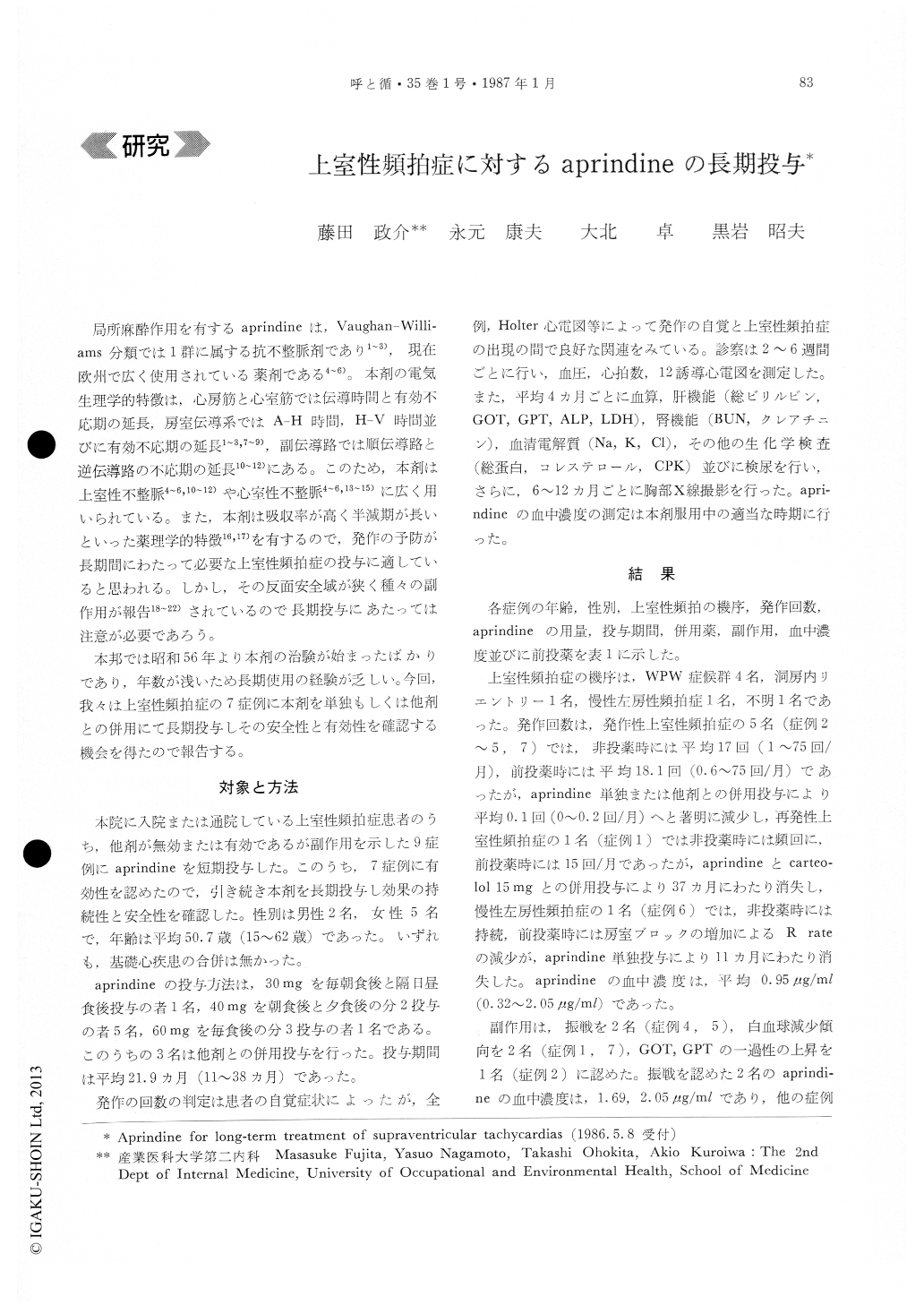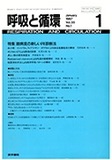Japanese
English
- 有料閲覧
- Abstract 文献概要
- 1ページ目 Look Inside
局所麻酔作用を有するaprindineは,Vaughan-Willi—ams分類では1群に属する抗不整脈剤であり1〜3),現在欧州で広く使用されている薬剤である4〜6)。本剤の電気生理学的特徴は,心房筋と心室筋では伝導時間と有効不応期の延長,房室伝導系ではA-H時間,H-V時間並びに有効不応期の延長1〜3,7〜9),副伝導路では順伝導路と逆伝導路の不応期の延長10〜12)にある。このため,本剤は上室性不整脈4〜6,10〜12)や心室性不整脈4〜6,13〜15)に広く用いられている。また,本剤は吸収率が高く半減期が長いといった薬理学的特微16,17)を有するので,発作の予防が長期間にわたって必要な上室性頻拍症の投与に適していると思われる。しかし,その反面安全域が狭く種々の副作用が報告18〜22)されているので長期投与にあたっては注意が必要であろう。
本邦では昭和56年より本剤の治験が始まったばかりであり,年数が浅いため長期使用の経験が乏しい。今回,我々は上室性頻拍症の7症例に本剤を単独もしくは他剤との併用にて長期投与しその安全性と有効性を確認する機会を得たので報告する。
Seven patients with supraventricular tachycardia dif-ficult to control with conventional antiarrhythmic agents were treated with aprindine, a new antiarrhythmic agent with potent local anesthetic activity, for a long term. Of seven, five patients paroxysmal supraventri-cular tachycardia, one recurrent spuraventricular tachy-cardia and one chronic left atrial tachycardia. Aprindine was administered orally in a daily dose of 30 to 60mg during a mean follow-up period of 21.9 months (11~35 months). In five patients with paroxysmal supravent-ricular tachycardia a mean of frequency of attack redu-ced from 17 attacks/moth before treatment to 1.5 during treatment with aprindine. Other two patients remained free of supraventricular tachycardia during treatment with aprindine. Five patients had experienced side effects, including transient elevation of hepatic enzyme in serum in one, fine tremor of hands in other two and mild leukocytopenia in the remaining two. Howe-ver, the therapy was continued without a reduction in dosage because neither the patients nor we considered these side effects sufficiently severe.

Copyright © 1987, Igaku-Shoin Ltd. All rights reserved.


